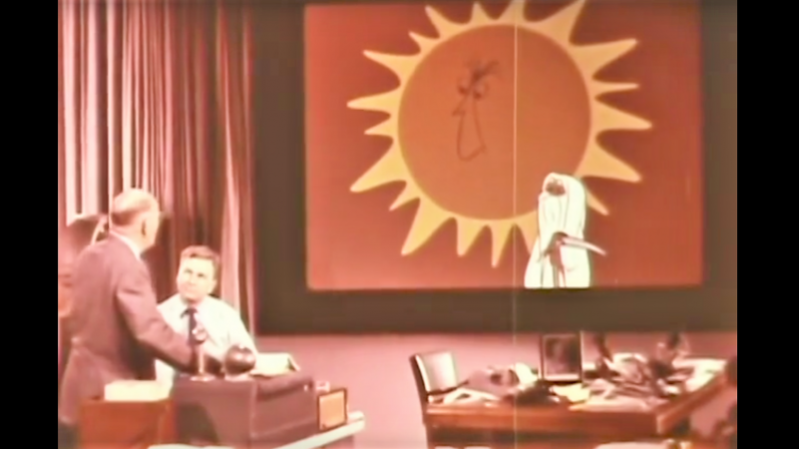For those of a certain vintage, no better day at school could be had than the days when the teacher decided to take it easy and put on a film. The familiar green-blue Bell+Howell 16mm projector in the center of the classroom, the dimmed lights, the chance to spend an hour doing something other than the normal drudgery — it all contributed to a palpable excitement, no matter what the content on that reel of film.
But the best days of all (at least for me) were when one of the Bell Laboratory Science Series films was queued up. The films may look a bit schlocky to the 21st-century eye, but they were groundbreaking at the time. Produced as TV specials to be aired during the “family hour,” each film is a combination of live-action for the grown-ups and animation for the kiddies that covers a specific scientific topic ranging from solar physics with the series premiere Our Mr. Sun to human psychology in Gateways to the Mind. The series even took a stab at explaining genetics with Thread of Life in 1960, an ambitious effort given that Watson and Crick had only published their model of DNA in 1953 and were still two years shy of their Nobel Prize.
Produced between 1956 and 1964, the series enlisted some really big Hollywood names. Frank Capra, director of Christmas staple It’s a Wonderful Life, helmed the first four films. The series featured exposition by “Dr. Research,” played by Dr. Frank Baxter, an English professor. His sidekick was usually referred to as “Mr. Fiction Writer” and first played by Eddie Albert of Green Acres fame. A list of voice actors and animators for the series reads like a who’s who of the golden age of animation: Daws Butler, Hans Conried, Sterling Halloway, Chuck Jones, Maurice Noble, Bob McKimson, Friz Freleng, and queen and king themselves, June Foray and Mel Blanc. Later films were produced by Warner Brothers and Walt Disney Studios, with Disney starring in the final film. The combined star power really helped propel the films and help Bell Labs deliver their message.
As with all such corporate sponsored films, the Bell Labs series was intended to educate and inform the public while reminding them of the intellectual prowess of the research arm of AT&T, aptly captured in The Idea Factory, a book [Mike Szczys] recently reviewed. But in effect, these films were among the very first serious efforts at STEM outreach. The films were produced during the Cold War when the US was pouring billions into achieving technical superiority over the Soviets. A steady supply of scientists and engineers was needed, and films such as these were intended to stimulate young minds to join the ranks. It’s hard to say how successful the effort was, but I know that it worked on me — even though I didn’t see Hemo the Magnificent until perhaps fifteen years after it first aired, it piqued my interest in physiology and started me on a career in science.

















Brings back a lot of memories. Great article.
Unfortunately doesn’t seem like we’ll be having anything like those anymore.
No, but we have hundreds of thousands of instructional videos on U-tube.
Which only self-identified geeks watch. The nice thing about these films is (while boring some kids) they lit the imagination of some kids who would have never thought of a career in science or engineering.
“No, but we have hundreds of thousands of instructional videos on U-tube.”
And that’s the sum total of our electronics industry. And we’re in deep shit.
(Anybody ever wonder at the correlation between the death of ATT and the death of our ENTIRE electronics establishment–including schools, now? But that’s OK, for most, I suppose; we’ve got plenty of burger chains…)
In the future we will all be serving each other coffee.
“No, but we have hundreds of thousands of instructional videos on U-tube.” And Hackaday! :)
Between the influence of this and Mr. Wizard, I grew up, went to school and eventually went to work for Western Electric and stayed in electronics my whole life. Dabbled is everything science when I was a kid.